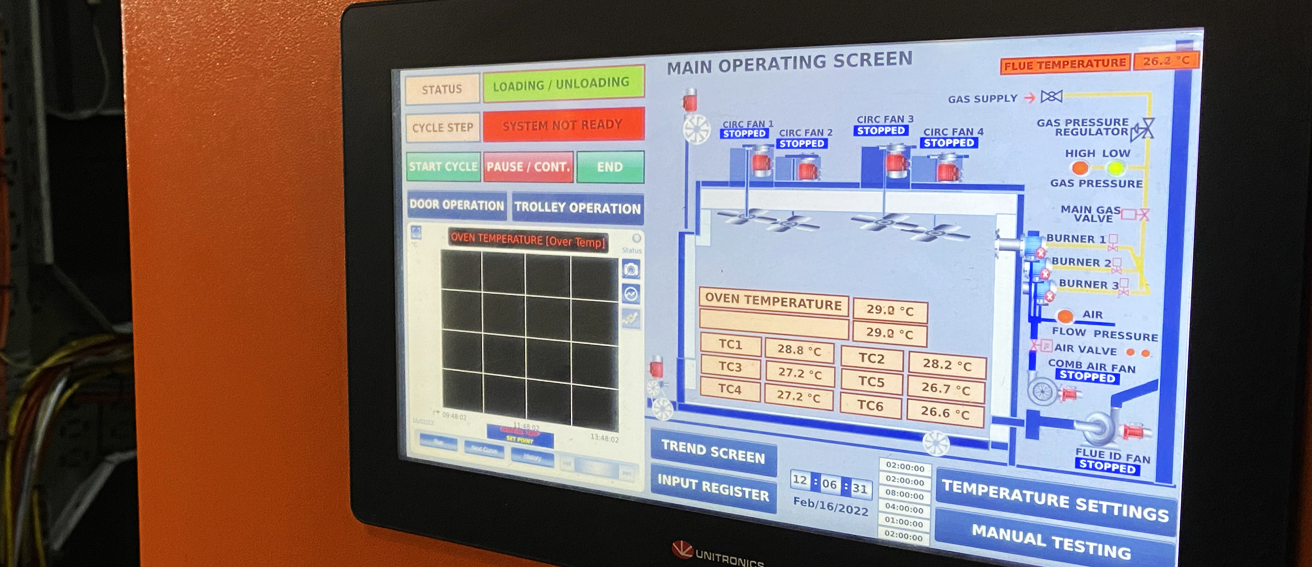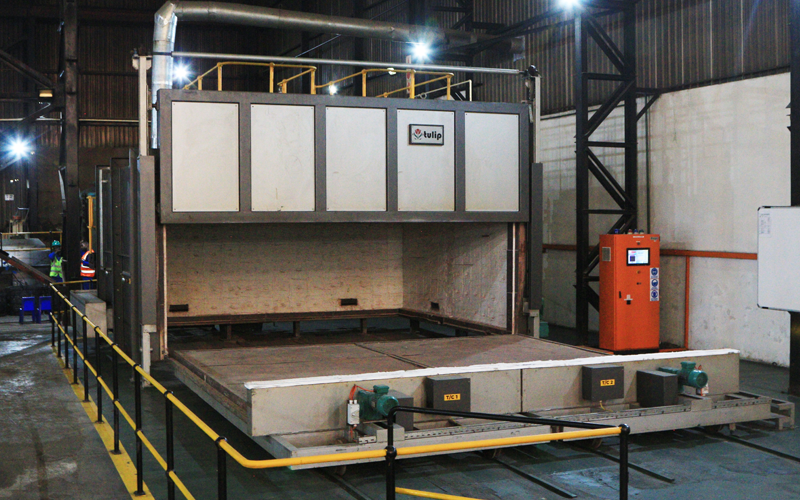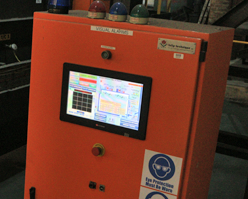
Stress Relieving
Parts which have been heavily formed, machined, cut, or are fabricated by welding, have high internal stresses. The part or assembly can be made stress free by heating to a low temperature, where the stresses will be removed by thermal relaxation, without affecting the properties of the part. The resultant part will then be less prone to warp change dimensions during further processing or use.
Parts which have been formed, machined, cut, or are fabricated by welding, may have internal stresses. Subsequent machining or forming may cause the part to distort, or possibly crack in service. By heating the component to a temperature about 75°F below the transformation temperature, and holding for one hour per inch of thickness, allowing the entire part to reach this temperature, up to 90% of the stresses can be relieved. The resultant part will then be less prone to warp change dimensions during further processing or use.
Since most parts which are stress relieved are subsequently machined, stress relieving is done in an air atmosphere. Ilaam does have the facilities to stress relieve using a protective atmosphere, which is useful for complex aerospace weldments. Ilaam also has the ability to stress relieve shafts and bars in the vertical position, which produces a stress-free product which is relatively straight.
Typically, parts that benefit from stress relieving are large and complex weldments, castings which have had a lot of machining, parts with tight dimensional tolerances


Benefits
- Less chance of deformation or cracking in future heat treatments
- Easier machining of metals after heat treatment
- High performance in final application, thanks to lack of internal stress points
- Resistance to volatile environments
Annealing
Annealing is used to induce softness, to alter ductility, toughness, electric, magnetic, or mechanical properties; or to produce a definite micro-structure.
Steel is annealed by heating the steel to a temperature above the upper critical temperature, holding it there until the temperature is uniform throughout the part, and then slow cooling the part through the transformation range. The heating and cooling rates depend on the composition, shape, and size of the part.
Full annealing removes the internal stresses, which build up because of cold working and other fabrication processes.
Spheroidize Annealing
Spheroidize annealing is applicable to steels which have more than 0.8% carbon. Parts are heated to between 1150°F and 1200°F and holding it at this temperature for a period of time to convert the micro-structure. Essentially, Cementite changes from a Lamella formation to an Alpha Ferrite matrix with particles of spheroidal Cementite (Fe3C). Spherodize annealing is generally done on parts which have been work hardened, to allow them to be further worked, either rolled in the case of coils, or drawn for wire. This resulting product has improved ductility and toughness with reduced hardness and strength. Spherodize annealing is normally carried out under a protective (endothermic) atmosphere to prevent oxidation and decarburization.
Normalising
The process of heating steels to the suitable temperature according to the kind of steels, followed by still-air cooling to remove the thermal influence of forging or hot rolling. This treatment refines the grain size and enhances the uniformity of the micro-structure. In some instances, this treatment will improve machinability. A previously cold worked part will soften when normalized. An annealed part will harden when normalized.
Normalizing involves heating the steel to about 100°F above its upper critical temperature, generally 1650°F. The component is then held at this temperature until the temperature is uniform throughout the part (generally one hour per inch of thickness), and then cooled in air.
The micro-structure produced by normalizing, depending upon the carbon content of the steel, is Pearlite (Eutectoid), Pearlite in a Ferrite Matrix (Hypoeutectoid), or Pearlite in a Commentate Matrix (Hypereutectoid). Cooling in air results in a fine Pearlite with improved mechanical properties compared to the full annealing process described above.
Normalizing is used to refine the grain structure and to create a more homogeneous structure when a steel is to be reheated for hardening and quenching or full annealing, or to unify the micro-structure of the heat effected zone of weldments, segregation in castings and forgings and provide a more uniform structure, and also to provide moderate hardening.
